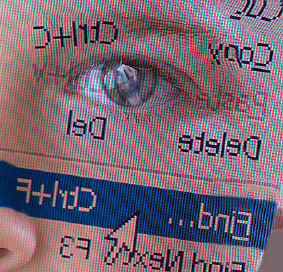 2012 Predictions
2012 Predictions
So its that time of year when I start thinking about what is going to be the next big thing in the coming year in terms of corporate IT and technology generally.
Cloud Computing
As in my 2011 predictions article cloud computing will continue to be a major theme within IT. Cloud computing will go through a maturity stage in the coming year and the definition will become widely accepted as –
“requires systems that run on a simplified data center architecture, operated largely by automated policies, not human hands. The architecture allows end users to self-provision their own servers, and has a billing mechanism that allows the supplier to charge only for the resource used, not the lifetime software license cost”.
Not just adding the word cloud to existing offerings as several of the large vendors have tried to do (termed as cloud-washing).
I believe that this concept will also move toward cloud based applications which does enable SME’s to use enterprise class applications at a fraction of the cost.
The major challenge for the big enterprise vendors is how they set up the billing for these kind of services and they will need to change the mind-set from the existing Processor based and other costing models.
Enterprise Apps
Again this was an area I touched on last year and this hasn’t moved as quickly as I thought it would, however there are signs of this market picking up. The site www.getapp.com currently has over 4,580 apps available for download in many areas of business.
This area needs to become more mature before it becomes mainstream but the signs are there that this is happening and the trajectory is in the right direction.
Social Media/Collaboration
The one area that I see massive movement next year is the area of Social Media and collaboration. In the past collaboration would have been treated separately but until the drive of social media the collaboration would have been 1-to-1.
With social media the collaboration becomes many-2-many or any other combination you can think off.
It seems strange that this hasn’t happened sooner as a corporation has to be the best example of a social network in existence.
The tools are now there and a good example is www.yammer.com. This has aspects of Twitter and Facebook and is integrated into corporate infrastructures for security purposes but is cloud based.
Theses tools lend themselves to be department; company; interest group; Project or any other configuration that suite the problem/need you currently have and facilitate communication interaction and inclusion.
Transform from Can’t do to Can do
Probably my most radical prediction for the coming year is the transformation of the IT department from a mentality of cant do to a can do mentality.
Its interesting to see that all of the predictions I have may so far are all around things that are or facilitate self service to the end user not the central IT department.
The central department is viewed as a hindrance to the organisation by many and as a result is often bypassed.
IT management need to change the culture and start to get things done. One of the most annoying things that business users experience is the SLA. Service Level Agreement, these were initially put in place to encourage requests to be seen to within a timeframe that can be measured for performance, what has happened over time is the SLA has become how long it will take – not the original intention.
This transformation will not happen overnight it will take years. If we don’t start this movement now we may end up with all IT roles being shifted to the cloud!
Well that’s it for my 2012 predictions it looks like we have an interesting year ahead.



Is the IT department being left behind in the 21st Century?
Is the IT Department being left behind in the 21st Century?
I was sparked into writing this article this morning after hearing an expression I thought we had moved away from. I overheard a couple of Senior IT guys at my client talk about “end user computing”.
This is an expression I haven’t heard since the 90’s or even the early 2000’s but with all the changes with devices and technology over last 10-15 years is it still a relevant concept?
This got me thinking about IT departments and the 21st Century. Has the march of technology overtaken the ability for the IT department to react and deliver technology solutions? Has the advent of digital given the business the opportunity to cut the IT department out of the equation and if they have what does the IT department need to do to reclaim the “technological authority”?
In the 80’s and 90’s we implemented massive organisation and productivity changing systems that impacted an entire organisation (without email and mobile phones in a lot of cases). Many of these system still exist with organisations and are deemed “heritage” or “legacy”. These needed a massive cohort to implement and then to support and this formed the bases of the IT department.
Large frameworks for the “management” of these projects and systems were developed and a governance structure put around the, ITIL; Prince 2 are two of the most popular. This led to longer delivery times and an administrative burden.
In parallel to these changes going on in the consumer space new technology was being introduced. Smart Phones, Netbooks, Tablets, Smart TV’s to name but a few. The internet that had ballooned during the late 90’s, and crashed, suddenly became mainstream and, as I predicted in the late 90’s the 4th utility.
All the while whilst this was going on the IT departments continued to get bigger and apply more and more frameworks and overheads along with outsourcing, what it saw as commodity skills which, were in fact, intellectual property (this will be the subject of a future article). What this meant was that to even have an idea to change a small bit of technology cost you thousands before you started.
It also led to the rise of the “shadow IT department” where end user departments were hiring, developing and supporting their own solutions.
Then we entered the digital economy. The rise of smartphones; tablets; ubiquitous internet via mobile phones and WiFi caused a perfect Nexus. Everything had to be digital. Again the IT department tried to impose a lot of the legacy disciplines onto the business which was rejected and as a result a new part of the business was created and called “digital” which meant the Technology Skilled staff worked alongside the business people as one to deliver what the business wanted.
Now we are deep into the new world. We have IT people looking after “heritage” and “Lagacy” systems and the Digital teams looking after the social media and digital world. Where does this leave the traditional IT department? My answer is well behind the curve.
People existing in the old world need to upskill and understand where the world has moved on to. Certain ideas and understandings need to be challenged and refreshed.
In conclusion there is no such thing now as “end user computing” everything is.